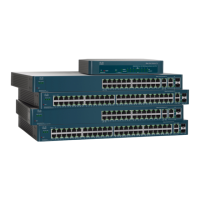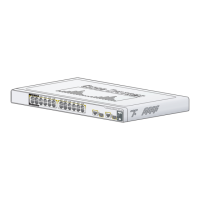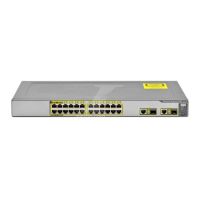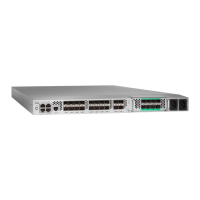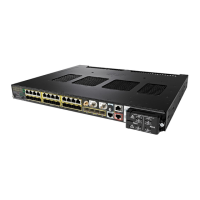Access Control
ACL Binding
595 Cisco 500 Series Stackable Managed Switch Administration Guide
27
If the VLAN you require is not displayed, add a new one.
STEP 3 Select one of the following:
• Select MAC Based ACL—Select a MAC-based ACL to be bound to the
interface.
• Select IPv4 Based ACL—Select an IPv4-based ACL to be bound to the
interface.
• Select IPv6 Based ACL—Select an IPv6-based ACL to be bound to the
interface.
• Default Action—Select one of the following options:
- Deny Any—If packet does not match an ACL, it is denied (dropped).
- Permit Any—If packet does not match an ACL, it is permitted
(forwarded).
NOTE Default Action can be defined only if IP Source Guard is not activated
on the interface.
STEP 4 Click Apply. The ACL binding is modified, and the Running Configuration file is
updated.
NOTE If no ACL is selected, the ACL(s) that is previously bound to the VLAN are unbound.
To bind an ACL to a port or LAG:
STEP 1 Click Access Control > ACL Binding (Port).
STEP 2 Select an interface type Ports/LAGs (Port or LAG).
STEP 3 Click Go. For each type of interface selected, all interfaces of that type are
displayed with a list of their current ACLs:
• Interface—Identifier of interface on which ACL is defined.
• MAC ACL—ACLs of type MAC that are bound to the interface (if any).
• IPv4 ACL—ACLs of type IPv4 that are bound to the interface (if any).
• IPv6 ACL—ACLs of type IPv6 that are bound to the interface (if any).
• Default Action—Action of the ACL’s rules (drop any/permit any).
NOTE To unbind all ACLs from an interface, select the interface, and click Clear.
STEP 4 Select an interface, and click Edit.
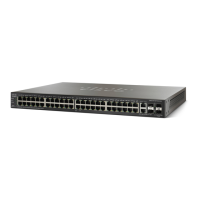
